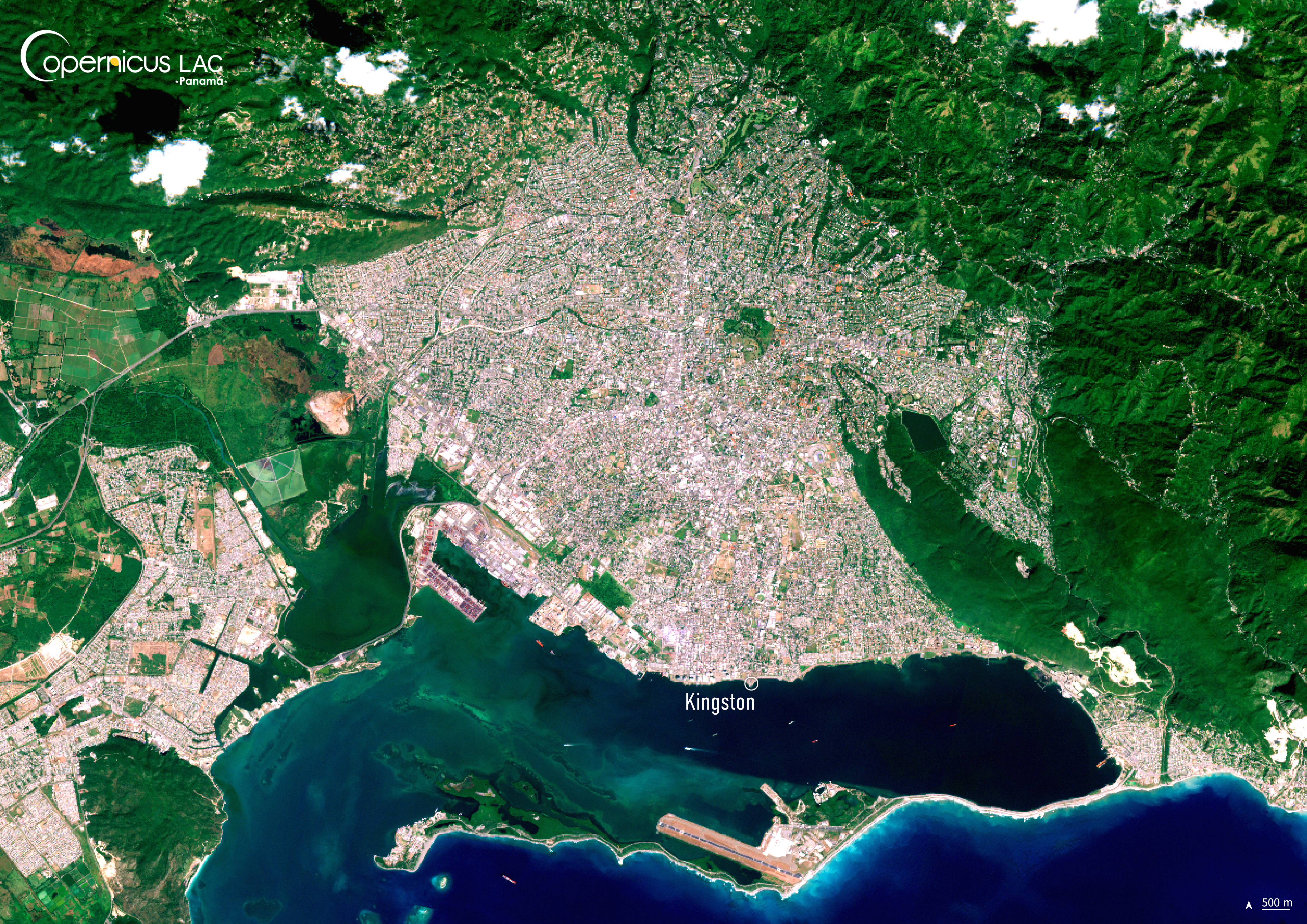
Date: 18 January 2025
Location: Kingston, Jamaica
Credit: Copernicus Sentinel-2 image, processed by the CopernicusLAC Panama Centre
Description:
This Copernicus Sentinel-2 image shows Kingston, the capital of Jamaica, as captured on 18 January 2025.
Jamaica is highly vulnerable to the impacts of climate change. Rising temperatures, stronger and more frequent hurricanes, coastal erosion, and sea-level rise pose major challenges. With most of the population concentrated in coastal urban centres such as the capital Kingston, exposure to these hazards is particularly high. The risks are further compounded by the degradation of natural coastal buffers, including coral reefs and mangroves, which normally help reduce the impact of storms.
Access to timely, accurate, and location-specific data is essential for informed decision-making in risk preparedness and disaster response. In this context, the CopernicusLAC Panama Centre acts as a regional hub for Latin America and the Caribbean. It supports authorities and researchers in harnessing free and open Copernicus data to strengthen disaster preparedness. Through close collaboration with regional stakeholders, the Centre also is co-developing tailored Earth Observation Services, improving capacities to better anticipate and respond to climate-related threats in our region.
Additionally, the Centre empowers local communities by improving their skills in leveraging Copernicus data for disaster risk reduction with resources and training materials freely available on the Centre’s Digital Campus.
To stay updated on the latest activities from our Centre, be sure to follow us on LinkedIn, Instagram and X.
Background Information
The Copernicus LAC Panama Centre’s activities take place within the overall context of the EU-LAC Digital Alliance, which is a strategic framework for promoting cooperation between the EU and the LAC region on digital and space issues under the EU Global Gateway umbrella. Within this context, the European Space Agency (ESA) is coordinating the Centre’s implementation on the basis of a Contribution Agreement with the Directorate-General for International Partnerships (DG INTPA) of the European Commission, and in close collaboration with Panama’s government, MIRE (Ministry of Foreign Affairs), Government Innovation Authority (AIG), and SENACYT (National Secretariat for Science, Technology and Innovation).
The CopernicusLAC Panama Centre will serve as a hub for innovation in the Latin America and Caribbean region, supporting national and local entities in leveraging Copernicus data and information to boost socio-economic benefits and resilience. In addition to providing engagement opportunities, the Centre is developing geospatial Disaster Risk Reduction (DRR) Earth Observation (EO) Services (addressing hydrometeorological hazards, wildfires, geological hazards, and hazard exposure) in close collaboration with local users and stakeholders, to whom they will be handed over to ensure that the unique needs of the region are addressed in the long term.
In addition, knowledge and skills transfer is a key element of the CopernicusLAC Panama Centre, which hosts a Digital Campus with access to training modules and educational resources for technical users and citizens alike. The Centre will also organise community-building events, policy dialogues and industry matchmaking, as well as hackathons and other EO data challenges to stimulate user adoption of Copernicus data and innovation. These events will also foster cross-collaboration among EO, disaster risk reduction (DRR) and other relevant ecosystems.
Finally, the Centre will support the development of a high-power computing and data storage cloud infrastructure for the LAC region. One of the final objectives of the Centre is to promote the development of communities of practice and to strengthen the knowledge and use of tools for DRR and other application areas in the public sector, academia, the private sector, and social organisations.







